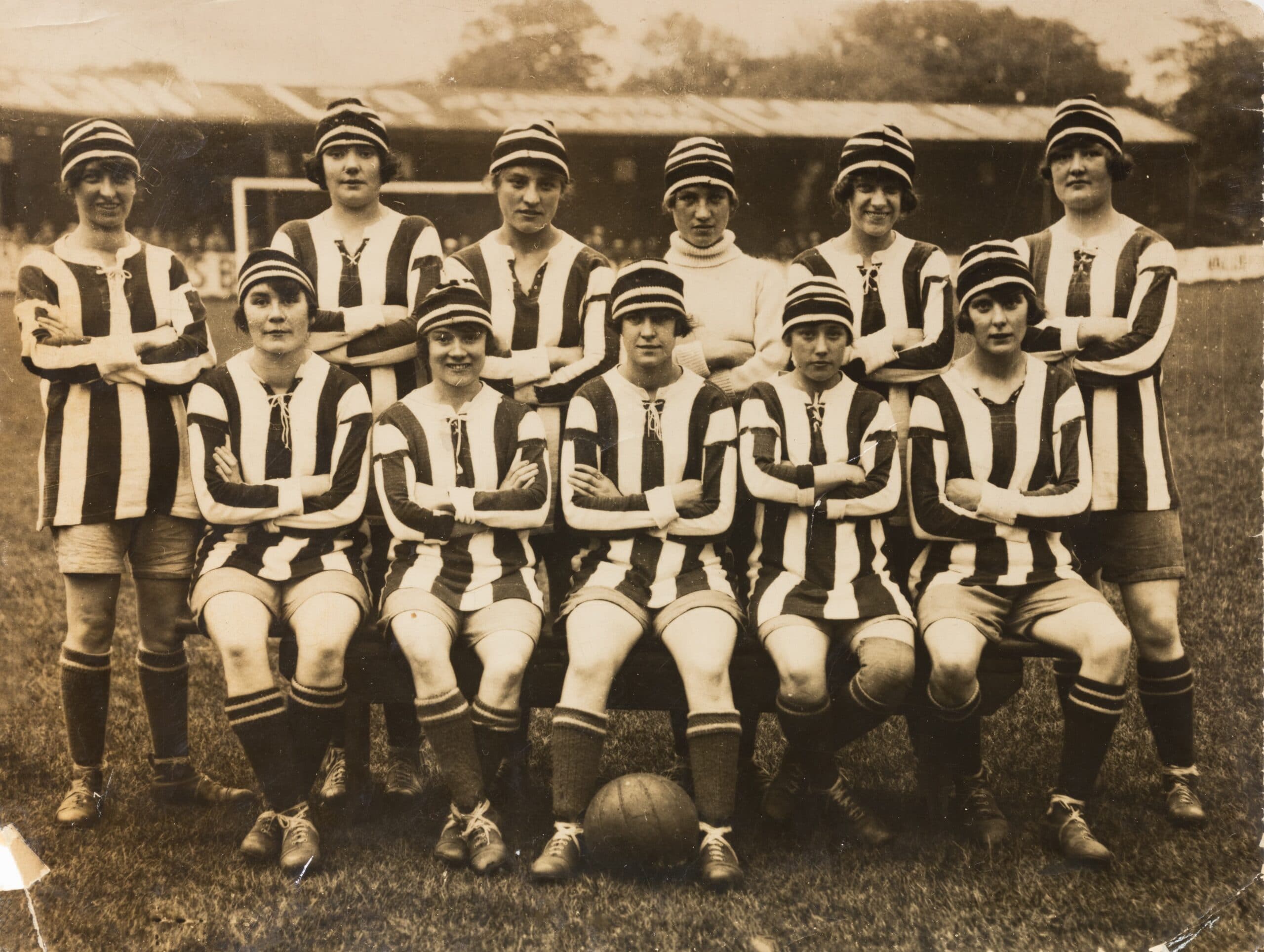In 1920 53,000 people packed Everton’s Goodison Park to watch a Boxing Day football match. But this wasn’t to watch the men’s team. This was a game between Dick, Kerr’s Ladies FC, a works factory team against St Helen’s Ladies.
Prior to the First World War, the women’s game was arguably as prevalent as their male counterparts. Yet come 1921, women were banned from playing football, not because they weren’t good enough, or people didn’t want to watch them play.
It was purely because the male establishment which made up the Football Association were threatened by the success of women.
Consequently, they chose to inhibit that success by deterring all clubs from allowing women to play by passing a resolution declaring that football was “quite unsuitable for females”.
This didn’t prevent women from playing, but it did inhibit their ability to use suitable venues, develop a professional side to the game allowing paid employment and sponsorship, access to suitable equipment and training, and be able to have their skills and abilities recognised on a par with men.
Although the ban was lifted in 1971, in 1993 the Football Association took over the administration of the women’s game from the Women’s Football Association, an independent organisation that had run women’s football from 1969.
In 2013 there was a celebration of 20 years of women’s football which totally ignored the fact that women’s football had continued in spite of the ban and was as old as the men’s game itself.
It’s not only football where women have been viewed as subservient to men, the same is true in heritage. The focus of stories told in the museums and archives across the UK, until relatively recently, were those of white, middle class, straight men.
Stories of women and working-class history and heritage which features so heavily in the story of football heritage, has not been welcome in the stores and on the walls of galleries and museums: Museums were there to teach the working classes, not to reflect their heritage.
The UK’s sporting heritage in general has been ignored until the recent past. Traditionally museums and other heritage venues saw sport as different to culture – as less important – and so collections of sport and the sporting past were left to the community to collect and protect.
Some of these collections are now beginning to be protected within our nation’s museums and the National Football Museum in Manchester is conducting significant and important work in both preserving these collections and working to narrate the stories the collections so clearly tell.
At Sporting Heritage we are working hard to ensure that at policy and funding level, both with sport and heritage, that women’s sport is recognised, valued and included.
We are now seeing women’s heritage included and reflected across many of the major policy makers and funding bodies such as the National Lottery Heritage Fund.
We currently have funding to allow us to develop a clearer understanding of the women’s sporting heritage which exists and put in place programmes and activities which not only allow this heritage to be better looked after, but to enable it to be shared and celebrated; to tell the stories which so many have tried to hide for so long.
These sporting stories will resonate with women across the UK and allow us to educate not only girls and young women in the difficulties and suppression of women before them, but also boys and young men to ensure this isn’t perpetuated in the future.
